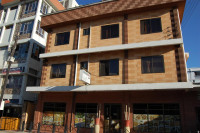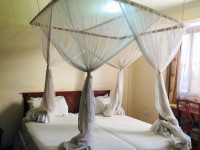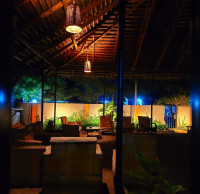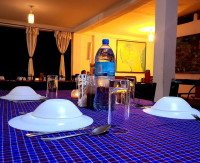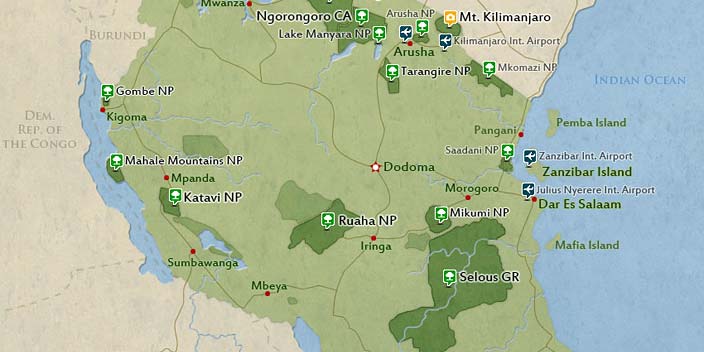
Arrival
Arrival

Day 1
Arrival in Arusha
Arrival in Arusha
You'll be greeted with warm hospitality and transferred to your accommodation in Arusha. You'll spend some time in Arusha, both the gateway city for most safaris in northern Tanzania and a fascinating place to explore. You will enjoy good restaurants, streets filled with energy and so many snapshots of vibrant Tanzanian city life. It’s everything you look for in an urban pit stop.

Day 2
Tarangire National Park
Tarangire National Park
After enjoying a delicious breakfast at your hotel, your adventure begins as you are picked up by your guide for the day. Together, you'll embark on a scenic drive to Tarangire National Park. Established in 1970 from a former colonial hunting ground, Tarangire boasts a rich and diverse ecosystem, spanning an area roughly equivalent to the size of Luxembourg.
As you venture into the park, be prepared to encounter a plethora of wildlife. Tarangire is renowned for its vast elephant population, making it one of the prime locations to witness these majestic creatures in their natural habitat.
However, the park is also home to a wide array of other wildlife species, including lions, cheetahs, and leopards.
With a bit of luck and keen observation, you may have the opportunity to spot these elusive predators during your safari.
- Main Destination:
- Tarangire National Park
- Accommodation:
- Fig Tree Lodge & Camp
- Meals & Drinks:

Day 3
Serengeti National Park
Serengeti National Park
Have an early breakfast at 6.00 am and then depart on a game drive en route to Serengeti National Park. Serengeti is the largest and most famous park in Tanzania, known worldwide for its endless plains, the wildebeest-migration, herds of lions and other predators like hyenas, cheetahs and leopards.
Crocodiles can be found in the Grumeti River, as well as hippos, giraffes, antelopes and gazelle. Your dinner and overnight will be in the heart of the Serengeti.
- Main Destination:
- Serengeti National Park
- Accommodation:
- Budget camping
- Meals & Drinks:

Day 4
Serengeti National Park
Serengeti National Park
The entire day is dedicated to wildlife viewing in the Serengeti. The areas that you visit will depend on where the migrating herds are.
Predators usually follow closely behind the trekking animals and include lions, leopards (in the acacia trees), and cheetahs. During the short rainy season in November and December, the herds move from the hills in the north to the plains in the south. During the longer rainy season from April to June, they return up north.
As the migration is completely dependent on the yearly rainfalls, the location of the herds may vary from year to year but your guide will know where to locate the animals and where to see them best. You will spend the night at Nyani Campsite.
- Main Destination:
- Serengeti National Park
- Accommodation:
- Budget camping
- Meals & Drinks:

Day 5
Serengeti National Park to Ngorongoro Crater
Serengeti National Park to Ngorongoro Crater
This morning, you will continue with further game drives in the Serengeti, and at noon you will leave for the Ngorongoro Conservation Area.
On your outward journey to the park gate, you will enjoy some more wildlife viewing before you leave the Serengeti National Park in the early afternoon to continue your journey to the Ngorongoro Conservation Area. As soon as you reach the edge of the Ngorongoro Crater, you will see the giant caldera below — a breathtaking view.
- Main Destination:
- Serengeti National Park
- Accommodation:
- Budget camping
- Meals & Drinks:

Day 6
Ngorongoro Crater
Ngorongoro Crater
After an early breakfast, you will have a half-game drive in Serengeti National Park before driving to Ngorongoro Crater. There is a very high possibility of spotting the big 5 (lion, rhino, elephant, buffalo, and leopard) in one day. Ngorongoro Crater is a World Heritage Site and brings wild animals and human beings together like no other place on earth.
- Main Destination:
- Ngorongoro Crater
- Accommodation:
- Budget camping
- Meals & Drinks:

Day 7
Lake Manyara National Park
Lake Manyara National Park
After a half-day game drive in Ngorongoro, you will drive to Lake Manyara National Park. Famous for its green scenery, Lake Manyara has varied birdlife, tree-climbing lions, hippos, and baboons.
The evergreen forest provides amazing views and is the outgrowth of an underground water flow that provides nourishment throughout the year.
- Main Destination:
- Lake Manyara National Park
- Accommodation:
- Fig Tree Lodge & Camp
- Meals & Drinks:

Day 8
Walking tour
Walking tour
You'll be warmly welcomed in the traditional Maasai manner, with lively singing and dancing that invites active participation. You'll embrace the chance to learn about customary practices such as fire-making and beadwork, gaining insight into the daily rituals and skills that have been passed down through generations.
Interact with the villagers, engaging in conversation and asking questions to learn more about their customs and way of life. Your knowledgeable guide will be on hand to interpret and facilitate communication as needed.
As your time in the village draws to a close, you will return to Arusha, where you'll have the option to spend the remainder of the day at your hotel, relaxing and reflecting on your experiences, or embark on a city tour to further explore the beauty and culture of the country.
Whichever option you choose, your day promises to be filled with unforgettable moments and meaningful connections with the Maasai people.
- Main Destination:
- Mto Wa Mbu (Town)
- Accommodation:
- Arusha Tourist Inn Hotel
- Meals & Drinks:

Day 9
Materuni Waterfalls
Materuni Waterfalls
Today, you will visit the waterfalls which are a walk of around 40 minutes. On the way, your guide will inform you about the culture of the Chagga, and their village life and explain the surrounding fauna and flora. The views are truly breathtaking, and with some luck, you will see the summit of Kilimanjaro. When you reach the waterfalls, you will see that they are more than 80 meters high. The pool at the bottom of the waterfall is an inviting place for a refreshing swim, so don‘t forget your swimwear!
After having enjoyed the scenery, you'll slowly return with your guide to Materuni village where you will experience a traditional Chagga lunch. You also will have the opportunity to taste our local banana beer —not to be missed!
The coffee tour is traditionally accompanied by Chagga songs and dances —a fun way to immerse yourself in the local culture. Before you say goodbye, you can savor the coffee you made and appreciate the views of the surrounding rainforest.
- Main Destination:
- Materuni Waterfalls (Highlight)
- Accommodation:
- No accommodation (End of tour)
- Meals & Drinks:


